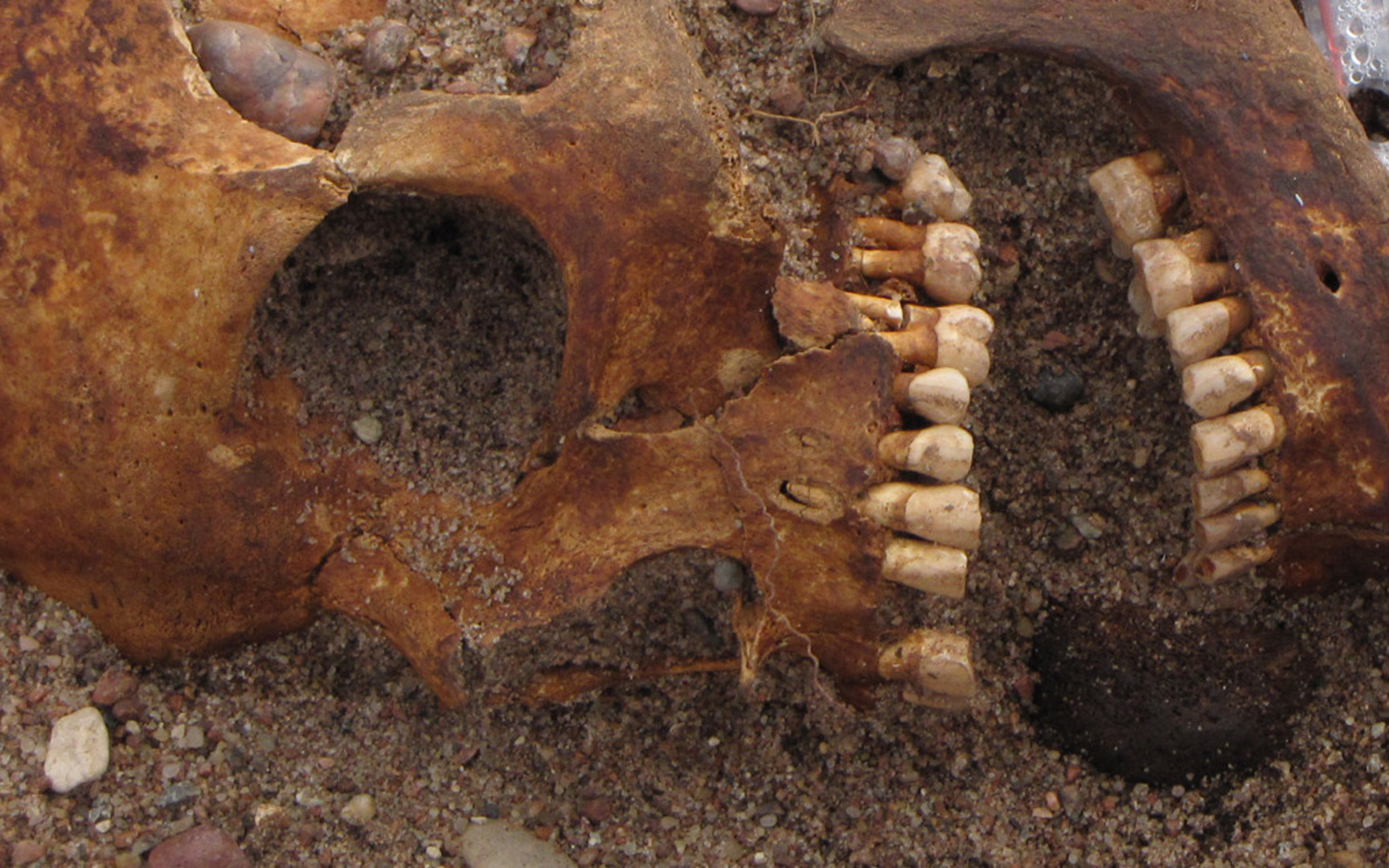An early Viking-era archaeological haul found on Saaremaa in 2008 has been returned to the island after over a decade of research and preservation work, ETV news show "Aktuaalne kaamera" (AK) reported Thursday night. The find has led to a reevaluation of the chronology of the Viking age in both Estonia and beyond.
The treasure trove, dating back to around 700-750 AD, during the Nordic iron age, was discovered in the small town of Salme, in what is thought to have been a longship burial. A second buried boat containing an even more glittering hoard was found nearby in 2010.
Over 2,000 individual finds made of both wood and metal (see gallery), including shield bosses, arrow heads, swords, everyday items such as combs, whetstones and much more were yielded during excavation work, AK reported. The artifacts were found in the wrecks of two clinker-built Viking longboats (the second was found in 2010) which had been used for ship burials, near present-day Salme, in the south of the island.
The boats-cum-graves also contained the remains of over 40 warriors, who had been killed in battle, and were found over 200 meters from the present-day coastline and four meters above the current sea level (estimated to be around 1.5 meters above the contemporary sea level).
Study of the skeletons found suggested that the individuals, all males, had originated in central Sweden.
Remains of two ritually-slaughtered dogs, as well as the remains of birds of prey used in falconry, were also uncovered.
Permanent exhibition to open in May
The items are back with the Saaremaa Museum, which is planning a new, permanent exhibition to open in May
Chief curator at the museum Priit Kivi said: "In the meantime, quite a lot has happened with these items. First of all, they underwent preservation work in Tallinn, to allow them to be kept for future generations to view."
"Shield bosses, swords, and a variety of items that might be needed in everyday life, such as combs, slips to sharpen swords, and much more were found here. One interesting item which emerged which looks simple enough is probably an arrow head which could be fired from a bow and, for instance, ignite a ship's sail," Kivi went on.
Other notable finds include a gilt sword pommel. All the items were returned to Saaremaa and the museum, Kivi said.
Find revised understanding of Viking era chronology in Estonia and beyond
The haul has also helped to fill in the gaps, in conjunction with other finds, in knowledge about the era and point the way to future research.
"Thanks to the finds [now] at the Saaremaa Museum, we can now place the Viking era about 50 years earlier in Estonia's history. Most of the finds come from the second ship in the Salme, which is probably the first sailing ship we know from previous knowledge," said Kivi.
A new permanent exhibition of Vikings should be completed at the Saaremaa Museum in May, and this year the whole year has been designated the Viking Year in Saaremaa.
Theories about how the vessels and their contents came to be buried on Saaremaa include that they were part of a raiding party against the Oeselians, the original, Finno-Ugric inhabitants of Saaremaa, with the latter turning the tables on the invaders in somewhat of a reverse in fortunes on the traditional perception of Viking raiders.
Viking longboats employed both sails and rowers to get around; the loss of too many of the latter may have forced the boats aground, where, as a potential last ditch effort involving using the upturned boats as a defensive emplacement, it is possible that survivors, or others, were permitted to carry out ritual pagan burials, with the site gradually being lost to the local collective memory down the centuries.
Longboat burials by Viking and other North European groups were a common occurrence; similar vessels have been found in the course of construction work in Tallinn, and often lead to stunning hauls of treasure.
As noted the find turns the clock back on earlier understandings of when the Viking Age began, with the raid, if that was what it was, taking place a much as a century earlier than the Lindisfarne raid on northeastern England in 793 AD.
The 2010 discovery of the second vessel modified interpretations, since findings suggested burials of those of noble birth, which may have meant the vessels were on a diplomatic mission and were then attacked by an unknown party.
The much later (13th century) Ynglinga Saga has it that the son of the Swedish King Ingvar was prone to patrol the eastern fringes of his fiefdom, combating Danes and Estonians in the process. Falling in battle, Ingvar is said to have been buried on the shores of Aðalsýsla, present-day (mainland) Estonia.
The Viking era is traditionally taken to have run from the 8th Century AD till the 11th Century AD, by which time the culture's Scandinavian heartlands had mostly converted to Christianity. Teutonic Knights brought the religion to Estonia two centuries later.
Source: ERR
